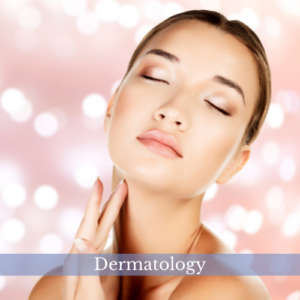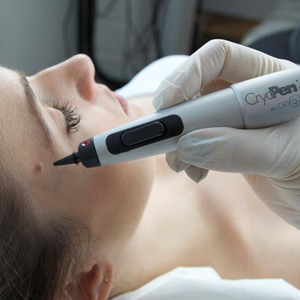
What is Dermatology
Acne | Mole Removal | Mole Mapping
Dermatology is the branch of medicine that focuses on the diagnosis, treatment, and prevention of conditions related to the skin, hair, nails, and mucous membranes. Dermatologists are medical doctors who specialize in this field and are trained to address a wide range of skin issues, from common skin problems like acne, eczema, and psoriasis to more complex conditions such as skin cancer and autoimmune disorders affecting the skin.
Let’s be honest, we all want perfect skin and to look our very best at all times. We’re here to help you. At Refine Clinic, Dr. Natalia Bratu is familiar with most dermatology issues from Acne, Moles and Eczema to skin cancers. She is a registered IMC doctor who has more than 20 years of experience in Medicine.
Acne
How do we define Acne? Well, acne is also known as acne vulgaris. It is a common skin condition that leads to an outbreak of blackheads, whiteheads, and pus-filled spots. Acne vulgaris is usually triggered by hormonal changes that occur during puberty. It can appear in so many places around the body from the neck, back face, and chest. During adolescence, this will generally get worse.
Scarring is most likely to take place when someone has severe acne. This will ultimately caus a lack of confidence.
Many people who haven’t found over-the-counter products to be effective have contacted us for advice. Treatments can take between to 2-3 months but once they get to work, they are very effective. Your recommended treatment plan is subject to how severe your acne is. This will all be discussed with you during a consultation with Natalia.
One of our most popular treatments is Mole Removal. For this treatment we use the Cryotherapy method, using the Cryopen.
Mole Removal
Moles are also known as melanocytic naevi. They are skin lesions that are usually brown or dark red in color. They can be harmless, but can also be quite dangerous if they turn cancerous.
Look for the following changes in any moles you have:
- Change in color.
- The mole gets unevenly bigger or smaller (unlike normal moles in children, which get evenly bigger)
- Changes in shape, texture, or height.
- The skin on the surface becomes dry or scaly.
- The mole becomes hard or feels lumpy.
- It starts to itch, bleeds, or oozes without being scratched.
During your consultation with Dr. Bratu, she will advise you as to whether she is concerned about the mole and whether an investigation will be required.
She will recommend a full excision or just taking a tissue sample. This will then be sent for tests, and depending on the results that come back, this will determine whether further treatment should be carried out.
Mole Mapping
Mole mapping can be very important in the early detection of skin melanoma. To map your moles Dr. Natalia uses a state-of-the-art dermatoscope to analyze the skin to find any suspicious moles and track changes in moles over time.
The procedure is simple and usually takes no more than 30 minutes. It is a completely painless procedure and involves the affected area being photographed by the dermatoscope. These images are high quality and high resolution and will highlight any abnormalities.
Dr. Bratu will then determine whether further investigation or treatment is needed.
If you have a regular GP and are unable to get an appointment with that them, there is no problem making an appointment with us and afterwards we can transfer notes to your own GP, if you wish.




